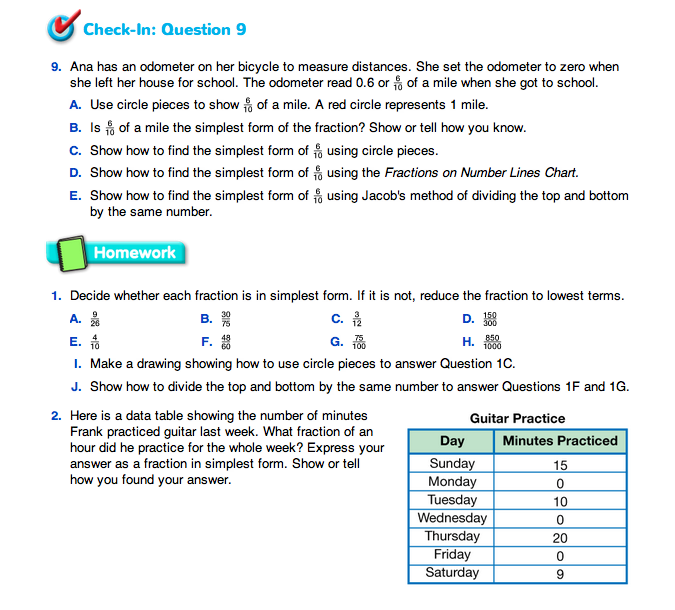Use Questions 8 and 9 in the Student Guide to summarize the lesson. After students simplify the fraction in Question 8, they apply the simplified fraction to the familiar context of an advertisement. Statements such as, “Three out of four dentists surveyed recommend Brand X toothpaste,” are common in commercial advertising.
- Why do you think advertisers use simplified fractions this way? (Answers may vary. Students may say they are simpler to understand, and therefore more convincing. For example, it can be more convincing to know that 3 out of every 4 people prefer a product than it is to know that 122 out of 160 people prefer a product.)
- Can you recall any other examples of simplified ratios you may have seen or heard in advertising?
- Do you think the fractions advertisers use are usually exact, or are they estimates? (If the number of people surveyed is large, such fractions are typically estimates. For example, if 160 dentists were surveyed and 118 of them recommend Brand X, an advertisement may state an estimated ratio of “3 out of 4 dentists.”)
- Is the statement you made about Bessie's Ice Cream based on an exact fraction or is it based on an estimate? (Answers may vary. If students say, “7 out of every 12 people surveyed,” the statement is based on an exact answer. If students rounded 7/12 to say, “1 out of every 2 people” or “2 out of every 3,” it would be based on an estimate.)

Use Check-In: Question 9 in the Student Guide to assess students' abilities to represent and identify fractions [E1]; represent and identify the simplest form of a fraction [E2]; and find equivalent fractions and ratios [E3].
Use the Workshop in Lesson 6 to provide targeted practice with these expectations.













